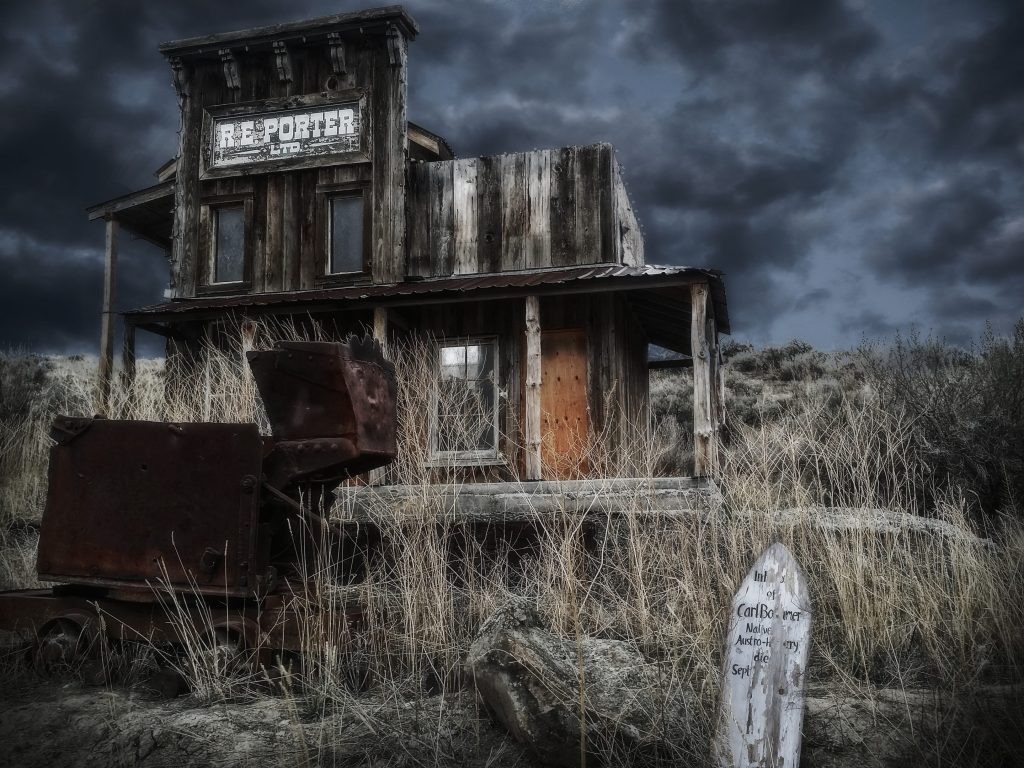
The death of high street retail? Bring it on!
The survivors of “retail hell” will be those that are prepared to change the way they think about customer experience
Reports of the death of the high street may have been exaggerated in the past but the decline in shop sales versus the increase in online sales reported over the Christmas period suggests that retail as we know it could well be in its death throes.
After my experience in the January sales in London I can only say the sooner the better.
What I learnt in a brief – but not as brief as it could have been – trip to Oxford Street last Sunday and a spot of grocery shopping on New Year’s Eve was that our tolerance of poor physical retail experiences is lessening, particularly when the online version is so much better.
What’s wrong with shopping?
Where do I begin? Let’s start with everyone’s favourite department store, John Lewis, on a Sunday afternoon. At the height of the sale season we were pleased to snap up a new mattress as a clearance bargain. We’d originally gone in to try out a Simba Sleep mattress – which you can buy online and return if not happy: now a standard with the new entrants (see also Casper, Eve and others) – but ended up with a different make at a clearance price which was more comfortable, albeit not covered by any guarantee should our in-store test proved to have been inadequate.
I get a bargain and a try-before-you-buy stage in the customer journey so what’s wrong? Well not that much if I’m honest, although I got a definite sense from the store assistant that he’d rather have been able to upsell to one of the many more expensive items on display (he could have helped me feel a bit happier about picking up a bargain instead). The trouble really started when we descended to the kitchen shop in the basement in search of a new pair of kitchen scales. As a keen cook and a bit of a kitchen gadget fan, I’ve previously spent happy times ambling through John Lewis kitchen shops, but something has changed since the last time I went to the Oxford Street “flagship” store. It proved tricky to find the right area and, when we did, the shelves were in such a mess that it took quite some time to work out what scales were available and how much they were.
On the basis of this second experience, online would have been much better – although it still took me a while to find the kitchen scales section on John Lewis’s website – and I could have bought my new mattress online as well, albeit at a non-clearance price.
Food, glorious food
Most of the time we shop online for food, via Ocado – it saves time and petrol cost – but it requires advance planning. In preparing for a New Year’s Eve dinner I needed to go to a local mall and that other bastion of British middle-class grocery shopping, Waitrose (part of the John Lewis Partnership). One missing ingredient required a trip to Sainsbury’s supermarket a short walk away. I found my missing spice but then had to wait in line whilst what appeared to be a large section of south-west London queued to pay at the self-service tills. There’s no way these are going to give you the kind of pleasant interaction on a standard check-out aisle that I’d had pre-Christmas in the same store – “unexpected item in bagging area” is hardly the basis for a great customer relationship. Most of the time I end up having to wait while a harassed assistant confirms that I am over 18 and can legally buy alcohol. My New Year’s Eve purchase was relatively smooth but the overall experience – albeit at peak time – was stressful.
Back to the Future?
There was a time when a trip to the shops was a relatively unhurried affair. Growing up in a small town over half a century ago I remember getting most of our food from a short trip to local shops. It wasn’t something full of magic moments as I recall but nor was it particularly stressful even when the local supermarket was involved. And my mother, who I was usually accompanying, would stop and chat to friends, neighbours and shopkeepers in the course of her expedition.
Of course, there was no competition from any other shopping channel in those days, just the choice between a few local shops so you can’t really compare it with our price-driven online interactions. However, leaving wistful reminiscence aside, the past has some lessons for the future of physical retail: shopping in those days was friendlier and less hurried. But if online can take away the need to stand in crowded shops or searching in vain for unavailable items what’s left on the High Street?
Café society
The answer is to forget about selling – at least in the same quantities as online – but to view the online and offline worlds as complementary rather than competing. Let’s look at a couple of retailers under threat from online competition: bookseller Waterstone’s (thriving) and music/video retailer HMV (filing for administration). I’m a customer of both, but in ways that illustrate this shift.
I spent a couple of hours in Waterstone’s Piccadilly branch at the weekend where I combined coffee, book shopping and a pre-dinner cocktail. The branch has three food/drink outlets and several floors of books and I based myself on the top floor café/bar with occasional forays to the book departments. So, my visit to the store is more about an overall leisure experience than a targeted piece of book shopping (which I could have done via Amazon or other online retailers). Waterstone’s still hasn’t integrated the online world very smoothly: one of the books wasn’t in stock and I declined the offer of ordering it as I figured I could do it online. However, I bought other books in the store so there’s no reason why the order couldn’t have been linked to my other purchases and offer a discount, securing more of my expenditure versus Amazon.
At HMV the threats are more extreme – we still like physical books for reading (versus eBooks) but are less enamoured of CDs and DVDs for audio/visual product – but the response has been less adventurous. My local HMV store also contains a branch of independent cinema chain Curzon. The cinema is one of the best in the area – a good choice of films, comfy seats, great sound and a good café/bar – but the degree of integration between the two is non-existent despite branding the venue as hmvcurzon. On the other two floors of the shop the offering is a traditional retail one: racks of CDs, vinyl and DVDs with various add-on products such as t-shirts.
Curzon is, as far as I can tell, thriving: the cinema experience is good and, as a distributor of independent films, it also offers a streaming service. Like many other cinemas it also offers live broadcasts of concerts, theatre etc. This move towards content and experience appears to have passed HMV by. Just as bands now make money from gigs rather than record sales it doesn’t require too much imagination to think how HMV might have evolved into a live experience provider – with links to related merchandise and streamed content – rather than remaining as a shop selling stuff that fewer and fewer people have a need for.
Entertaining outcomes
I’m not going to make any predictions for the future of high street retail other than to say that a better understanding of customer outcomes is required. If you view your customer’s outcome as “buy some stuff at an acceptable cost/convenience level” then you’re operating within the traditional retail paradigm. With online taking up an increasing proportion of shopping, that cost/convenience offer will need to be pretty compelling to cover the cost of high street property.
But if you view the customer’s outcome as “feel part of the community” (my experience of 50 years ago) or “have a great time with friends/family” (my recent Waterstone’s/Curzon experiences) then you might view the proposition you offer quite differently. In my little corner of south-west London, the number of coffee shops – both independent and chain – has doubled over the past 12 months and they are all busy: that points to a need that people have to get out into their community (even if it’s to sit hunched over a laptop with headphones on).
I’m not saying all shops should have a café attached. Retailer WHSmith provides a dire in-store experience (occasionally including a coffee vending machine) but it doesn’t prevent them achieving high performance, particularly given a focus on travel-related outlets (where leisurely browsing isn’t part of the experience). However, for most retailers, asking what’s missing from their customers’ experience and taking action to reinvent their outlets accordingly is the best hope to keep the high street alive.
It’s also a highly complex area and different solutions will apply in different localities – what might work in Wimbledon may not play so well in Warrington or Wigan. We’ll be returning to this theme in subsequent articles and inviting other people to contribute. If you’ve got direct experience in this area we’d love to hear your views.





Nice piece Nick. I conclude from it that successful High Street businesses will be the ones that create pleasant human experiences – i.e., sensual, fun, entertaining, social and experiential.